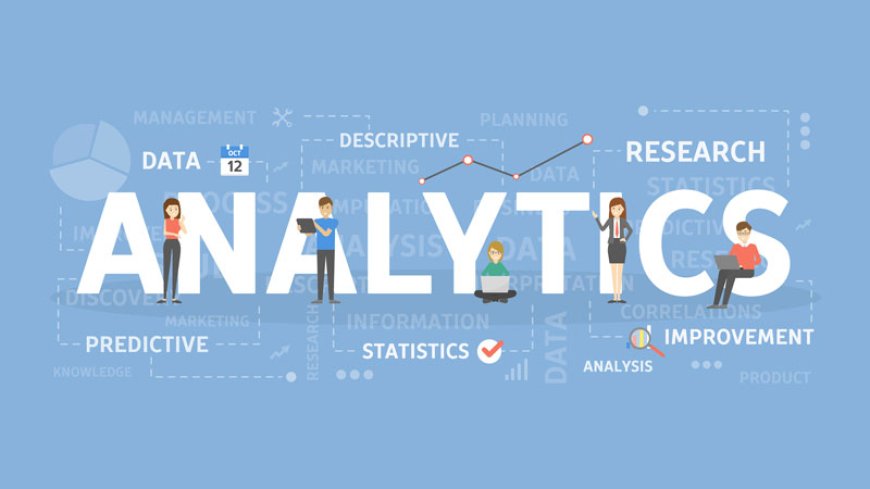Understanding Descriptive, Predictive, and Prescriptive Analytics in Business: A Deep Dive
Utilize descriptive, predictive, and prescriptive analytics to analyze business data and provide actionable insights for informed decision-making.

Today's data-driven world is moving at an astonishing speed, and business analytics is at the helm, steering this transformation. Business analytics has become a crucial engine powering modern organizations, with Descriptive, Predictive, and Prescriptive Analytics forming the three pivotal pillars. According to a report by IBM, businesses that leverage analytics are five times more likely to make faster decisions. By unlocking the power of these three types of analytics, businesses can illuminate the path to their goals, with each type answering a unique set of questions—What has happened? What could happen? What should we do?
To fully comprehend the scope and value of these types of analytics, we'll delve into each one, exploring their meaning, examples, impacts, and real-world use cases.
Table of Contents
- Descriptive Analytics: The Rearview Mirror
- Predictive Analytics: The GPS Navigation
- Prescriptive Analytics: The Steering Wheel
- Impact of Analytics in Business
- Real-World Use Cases of Analytics
Descriptive Analytics: The Rearview Mirror
Descriptive analytics is the primary, foundational stage of business data analysis. It interprets historical data to understand what has occurred in the business. In essence, it's like looking in a car's rearview mirror; it tells you where you've been. According to Forbes, 80% of business analytics involves descriptive analytics.
A simple example of descriptive analytics is a monthly sales report. It provides clear information on past sales numbers, enabling businesses to gauge their performance and identify patterns and trends.
Predictive Analytics: The GPS Navigation
Predictive analytics takes the baton from descriptive analytics. It uses statistical models and forecasting techniques to understand the future. This is akin to a GPS navigation system, predicting the paths your journey might take.
For instance, an e-commerce business might use predictive analytics to anticipate customer behaviors, such as their likelihood to purchase based on their browsing patterns. A report from Market Research Future suggests that the predictive analytics market will reach $13.8 billion by 2025, indicating the significant potential and demand in this field.
Prescriptive Analytics: The Steering Wheel
Prescriptive analytics, the most advanced stage, suggests actions to take for optimal results. This is the steering wheel of your business vehicle, directing you on the best path to take.
Consider a logistics company using prescriptive analytics to optimize their delivery routes. The system will not only predict potential issues, such as traffic or roadworks, but also recommend the best alternative routes, considering factors like fuel cost and delivery time.
Impact of Analytics in Business
The impact of these analytics types in businesses is profound and multifaceted. For starters, they enable data-driven decision making, fostering efficiency, and reducing the risk of human error. A survey by Bain & Company revealed that organizations using analytics were twice as likely to be in the top quartile of financial performance within their industries.
Furthermore, analytics help in identifying business trends and patterns, guiding marketing strategies, improving operational efficiency, and personalizing customer experiences. In essence, analytics is a cornerstone of competitive advantage in the modern business landscape.
Real-World Use Cases of Analytics
Let's illustrate these concepts with real-world examples:
-
Netflix: Netflix uses predictive analytics to recommend shows to its viewers based on their past viewing behavior, boosting user engagement.
-
UPS: The logistics giant uses prescriptive analytics for its ORION (On-Road Integrated Optimization and Navigation) system, which determines optimal delivery routes, saving millions in fuel costs.
-
Amazon: Amazon leverages descriptive analytics to analyze customer purchase history, enhancing its product recommendation system and improving customer satisfaction.
Descriptive, predictive, and prescriptive analytics are not standalone systems but rather a trifecta that collaborates to provide comprehensive insights. They're akin to the rearview mirror, GPS navigation, and steering wheel of a car, guiding businesses along their journey to success. As the era of Big Data continues to unfold, these forms of analytics will be increasingly vital for organizations to maintain a competitive edge. It's time for businesses to buckle up and embark on this exciting analytics journey.











































